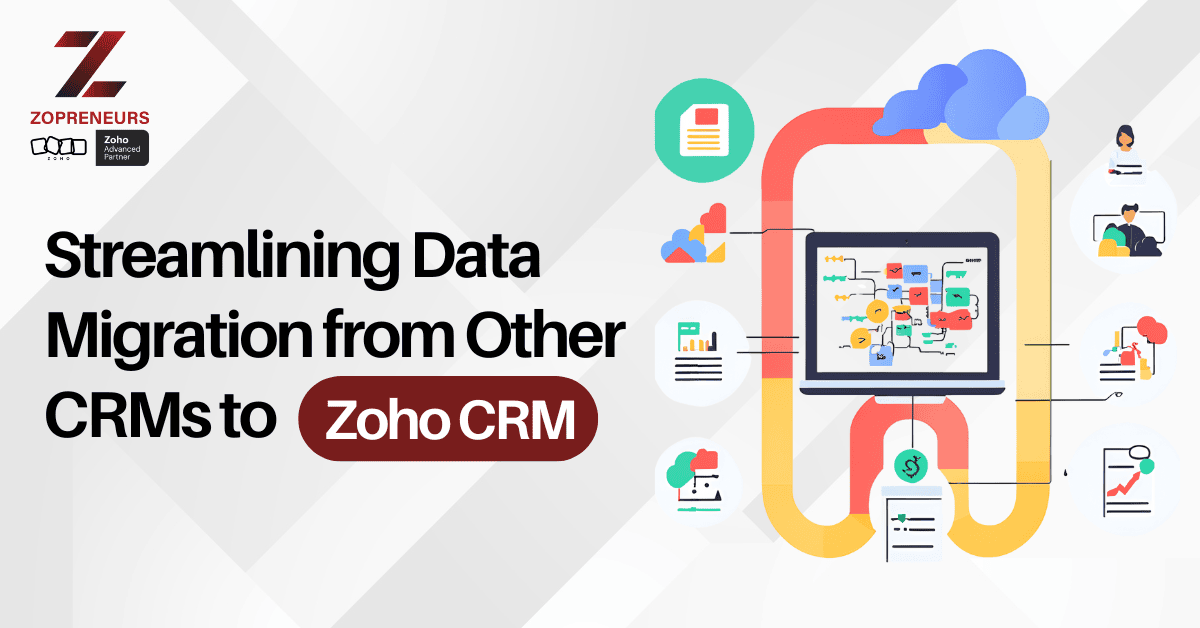
In today’s fast-paced business landscape, Customer Relationship Management (CRM) systems are essential for maintaining meaningful customer interactions and driving growth. Zoho CRM stands out as a versatile and user-friendly platform that integrates seamlessly with various tools. However, transitioning data from other CRMs to Zoho CRM can appear daunting. This blog will guide you through the process, ensuring a smooth and efficient data migration.
Why Transition to Zoho CRM?
Cost-Effectiveness: Zoho CRM offers competitive pricing with a range of features suitable for businesses of all sizes.
Scalability: As your business grows, Zoho CRM can scale with you.
Integration Capabilities: It integrates with popular tools like Google Workspace, Slack, and third-party apps.
Customization: Tailor the CRM to your specific business processes.
Preparing for Data Migration
Before transferring data, careful preparation is crucial to avoid data loss and maintain consistency. Follow these steps:
Audit Your Existing Data: Identify redundant, outdated, or incorrect data in your current CRM and clean it up.
Understand Zoho CRM’s Structure: Familiarize yourself with Zoho CRM modules, such as Contacts, Leads, Deals, and Accounts, to map data appropriately.
Backup Data: Create a complete backup of your current CRM to prevent accidental data loss.
Plan Data Mapping: Define how fields in your current CRM correspond to those in Zoho CRM.
Methods for Migrating Data to Zoho CRM
Manual Data Import
Export data from your existing CRM in CSV or Excel format.
Log in to Zoho CRM, navigate to the Import module, and upload the file.
Use the field mapping feature to match your data with Zoho’s fields.
Zoho CRM’s Built-In Migration Tool
Zoho offers a built-in migration wizard to simplify the transition process for popular CRMs like Salesforce, HubSpot, and Microsoft Dynamics.
Access the migration tool via Setup > Data Administration > Data Migration.
Follow the step-by-step instructions to map and transfer data.
Third-Party Integration Tools
Platforms like Zapier, Integromat, or Skyvia enable automated and seamless data syncing between your current CRM and Zoho CRM.
Configure workflows to transfer data in real time or batch mode.
Zoho Marketplace Apps
Explore Zoho Marketplace for apps that facilitate CRM-to-CRM migration.
These apps are often pre-configured for specific CRMs, reducing manual effort.
API Integration
For complex migration requirements, leverage Zoho CRM’s API.
Collaborate with developers to build a custom integration that handles unique data structures.
Best Practices for a Smooth Migration
Test the Process: Perform a test migration with a small dataset to identify potential issues.
Monitor Data Integrity: Post-migration, verify that all data has been transferred accurately.
Train Your Team: Provide training sessions to familiarize your team with Zoho CRM’s interface and functionalities.
Leverage Zoho’s Support: Utilize Zoho’s support resources, including documentation, webinars, and community forums.
Post-Migration Tips
Optimize CRM Configuration: Customize workflows, automation rules, and dashboards to maximize efficiency.
Integrate Other Tools: Connect your Zoho CRM to other tools like email marketing platforms and accounting software for a unified ecosystem.
Regular Maintenance: Periodically audit and clean your CRM data to maintain accuracy.
Conclusion
Migrating to Zoho CRM is a strategic move that can enhance your business’s operational efficiency and customer management capabilities. By preparing adequately, leveraging the right tools, and following best practices, you can ensure a smooth transition. Start your Zoho CRM journey today and unlock the potential of streamlined data management!
